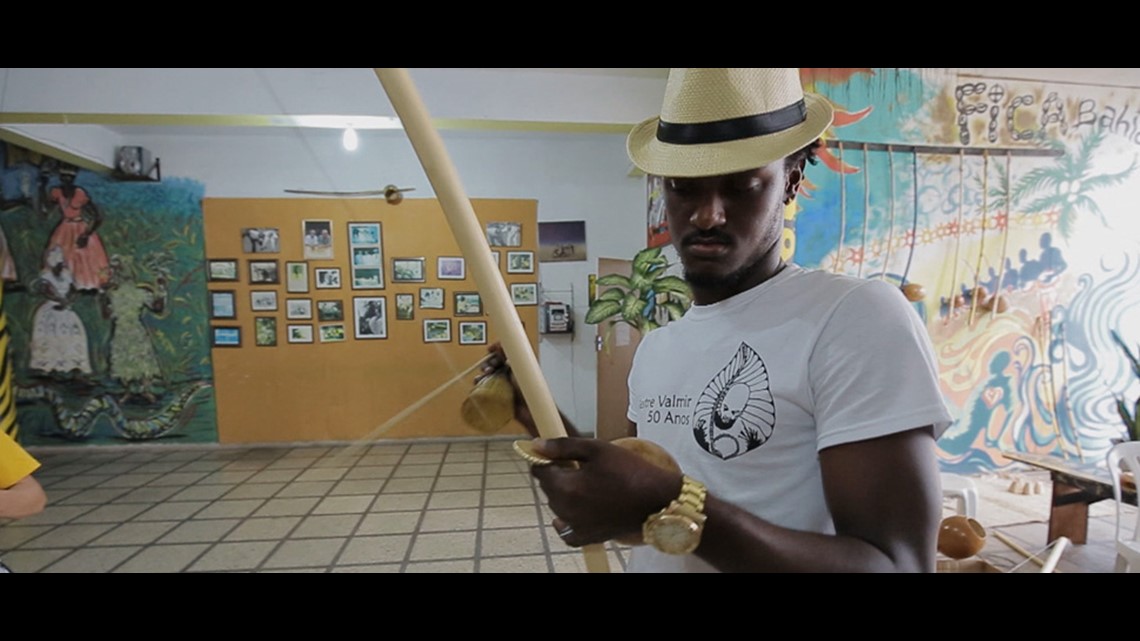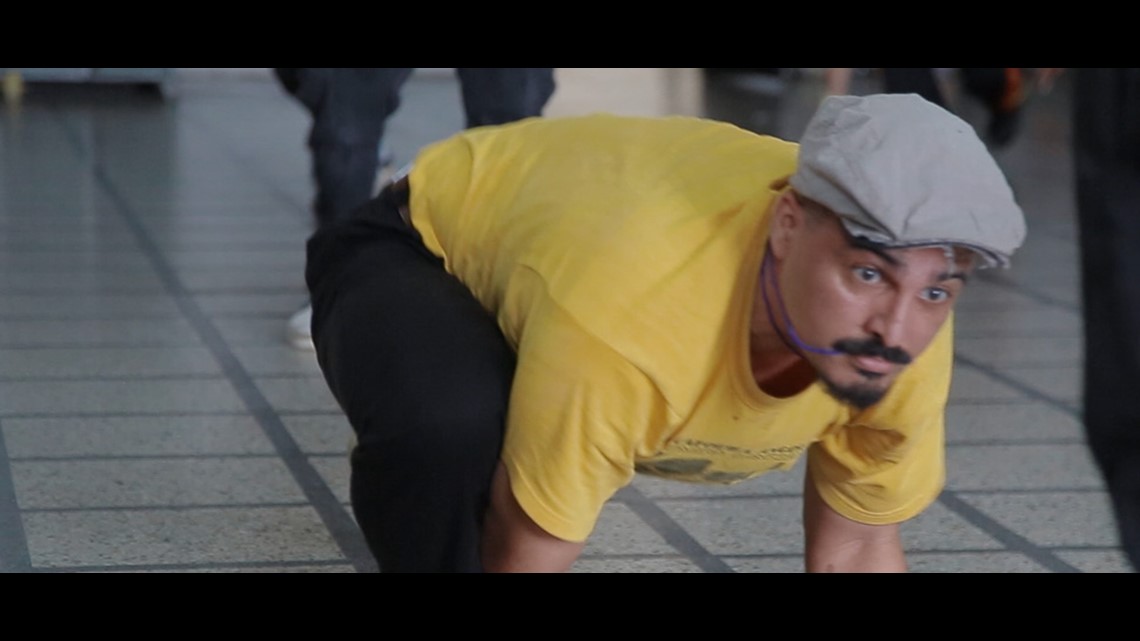SALVADOR, Brazil (WTHR) - Salvador is known for its Portuguese colonial architecture, spectacular coastline and rabid soccer fans. But the country's former capital is also known for a symbol of Brazilian culture. A discipline that children know. The martial art that you see performed on the streets is practiced inside an unassuming building in the center of Salvador. This is the place where people from all over the world learn Capoeira.
"Capoeira is a manifestation of cultural traditions which are found in Africa," said Santos Valmir Damasceno. "We think it came in 1560. Capoeira is a number of specific movements. At one time in its history, it was a form of resisting against slavery."
Damasceno is considered one of the best teachers in the world. His hometown of Salvador is considered the best place to learn Capoeira.
"When Capoeira came to Brazil, it first came to Bahia. Salvador is seen by many as the mecca of Capoiera. This is where people come to the source," said Damasceno. "Brazil exports Capoeira to the world. But we also import. A lot of people come here to drink from the source. Salvador is an area seen as the source or the fountain of Capoeira."


Those who practice the martial art are called Capoeiristas. Daniel Mattar has travelled to Salvador from Oakland, California to learn from Damasceno.
"Capoeira is a connection with your mind, body and soul," said Mattar.
Santos Flores grew up in Salvador. He now lives in North Carolina but comes back to his hometown to learn.
"It's a cultural art and has music elements, dance elements. Just a beautiful art," said Flores. "Coming to Salvador really is a way to read from the book of Capoeira. Not a lot of it is written down. It's oral tradition. My master is a reference book. A reference knowledge. For me, you have to have a strong reference point.”
Capoeira is a combination of dance, acrobatics and music. It is often called a game. Even though some of the moves appear to mimic fighting, Capoeira is no longer a physical battle.
"Our struggle has more to do with social realities, social inequalities, racial inequalities," said Damasceno. "The movement of the Capoeirista involves all of that. Slight of hand and foot. Eyes wide open. You need to see where the possible blows are going to come from. You're in the moment. You will always do everything you can not to hurt your opponent. But, you show that you could if you really wanted to," said Damasceno.
But those who practice believe Capoeira is also a philosophy for life.
"We use the Capoeira to reach out to people who are in situations of risk like kids living on the street or people who live around violence. If we're teaching the people we reach out to about how aggressive Capoeira could possibly be, we see that as a wrong approach. The city of Salvador, the cities of Brazil don't need more violence. They need less violence. We approach it from a different angle, as a philosophy of life," said Damasceno.
"For me, Capoeira is a medicine. When I don't train, my body feels a little bit down. For me, Capoeira is a way to keep my body maintained," said Flores. "Drinking Capoeira or eating Capoeira for me, is just living it, thinking it. Being around it as much as you can," said Flores. "For me, it's a wonderful practice of life,” said Flores.
Students say what they are learning from the master is different than the performance you will see on the street.
"They are not connected with the history of Capoeira. They're not really doing Capoeira. They're just being a player. They're not being a Capoeirista," said Mattar.
"There was a time when to be a Capoeirsta was frowned upon. It was a marginal activity. But nowadays, people would be proud to say they are Capoeirstas. But, these weren't always the people that brought the fight and the struggle back in the old days. It was a marginal activity that we've always practiced. But now, it's becoming more and more popular and more accepted. There are people getting on the bandwagon," said Damasceno.
Mattar is taking the skills he learns in his native country back to the United States where he will teach Capoeira.


"It's a constant learning practice," said Mattar. "If you only use your body, you're just being an athlete. If you only use your mind, you're just being an intellectual. Capoeira, you must think what you're doing."
"Capoeira nowadays is the main way we disseminate the Portuguese language. In order to be a Capoeirista, you have to sing the songs. And, in order to do that, you must know Portuguese," said Damasceno.
"To be a good Capoeirista involves many different aspects. It's not just the actually physical learning of the movements. It's a daily living with the life of a Capoeirista. This can be through the music. This can be through the movement. This can be through the physical activities and physical well-being and also the history. The sense of identity is a major aspect of what Capoeira is all about," said Damasceno.
A Brazilian tradition with roots in Africa. Still emerging from a city known for being the fountain of Capoeira knowledge.

